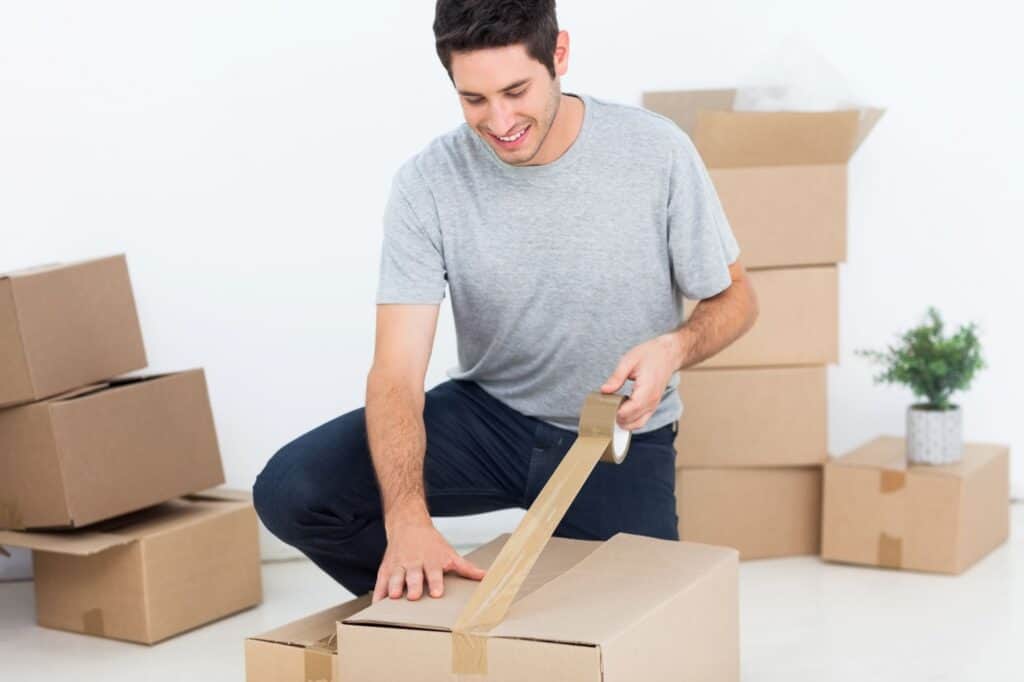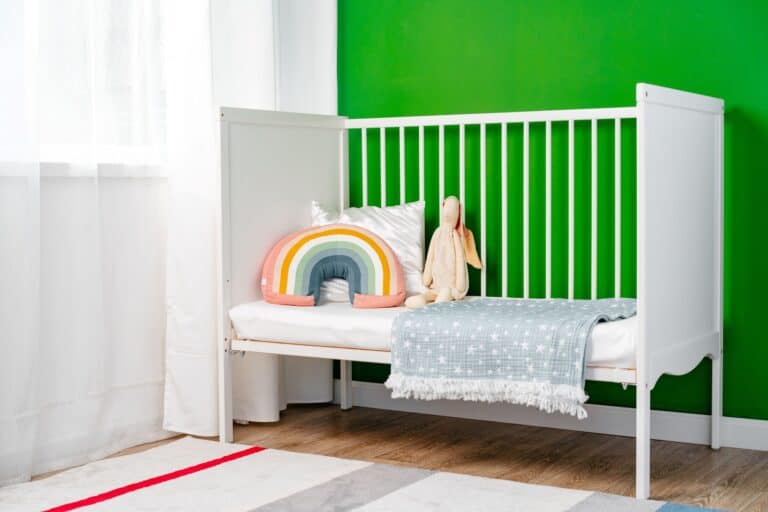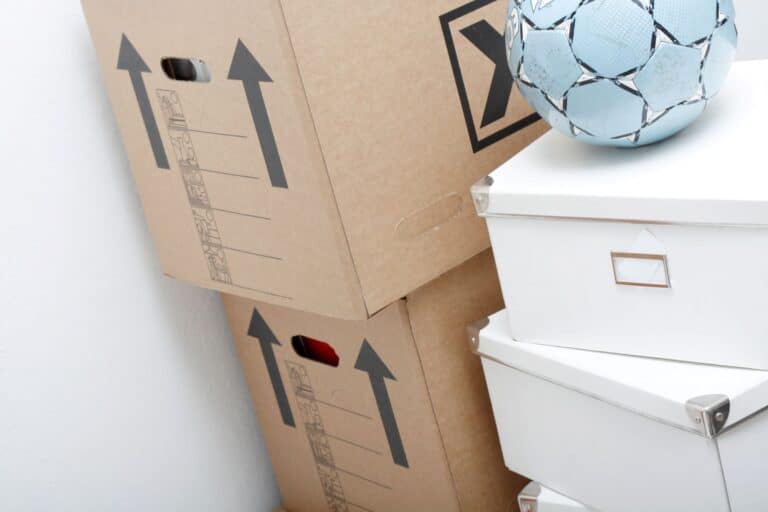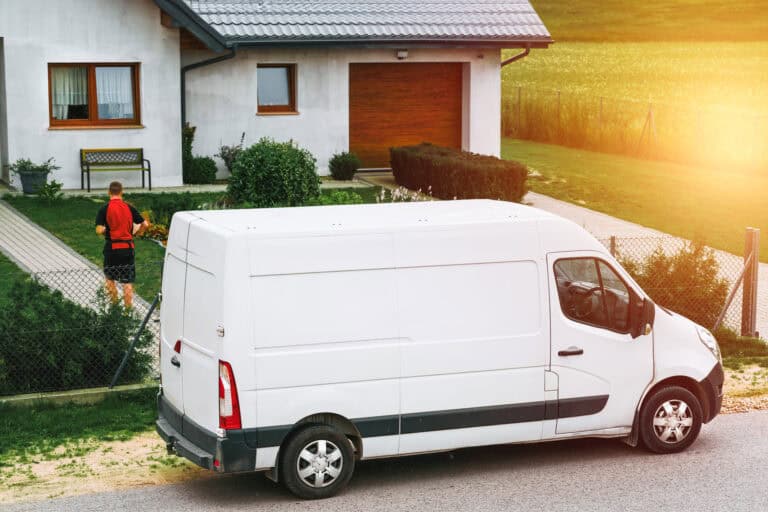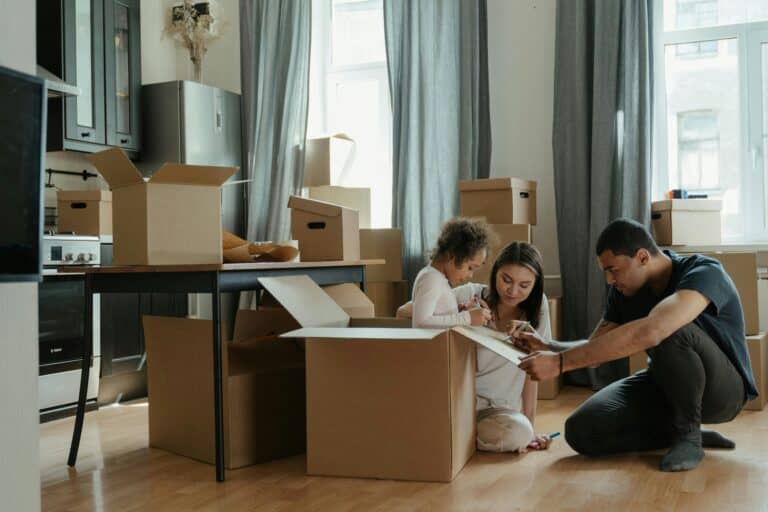Moving doesn’t have to be chaotic. Discover how to pack and unpack for a home removal efficiently with our detailed tips. From sorting your items to labelling boxes and setting up your new home, we cover everything to ensure a smooth transition.
Key Takeaways
- Start decluttering well in advance to streamline your move and involve the whole family for a therapeutic experience.
- Gather all necessary packing supplies early to ensure a smooth and organised process, avoiding last-minute store runs.
- Label and pack boxes room by room, and unpack strategically starting with essential areas like the kitchen and bathroom to create a functional, welcoming home quickly.
Declutter Before Packing
Have you ever felt the liberation that comes with letting go of things you no longer need? That’s the bliss of decluttering before a move. Imagine cutting through the clutter, creating space not just in your home but in your life, for new memories to bloom. It’s about starting anew, lighter and more focused on what truly matters.
The secret lies in starting to pack by sorting through your possessions well ahead of time – think six months to a year before moving day. As you meticulously start packing, categorise your possessions into:
- keep
- rubbish
- donate
- sell
- store
piles, you’re not just packing – you’re curating your life.
Where should you start? Tackle the least used rooms first. This will build the momentum you need to keep going. Dedicate a few hours each week specifically for this task, and soon you’ll find the process becoming less of a chore and more of a therapeutic routine. Remember to include all family members in the process. Encouraging children to declutter their own space teaches them valuable decision-making skills. By the time you’re done, you’ll have packed items you’re sure to use in your new abode and saved on packing supplies.
Gather All Your Packing Supplies
Visualise yourself as the leader of your packing brigade, with all your boxes and supplies at the ready. This is the foundation of a well-executed move. Before stowing away the first item, make sure you have:
- Robust boxes
- Packing tape for reinforcement
- Bubble wrap for your treasures
- Markers for clear labelling
- Packing peanuts for cushioning
- Stretch wrap to protect furniture from scratches and dust
- Suitcases for packing heavy items
- Heavy-duty moving boxes and hardware bags for keeping small parts secure
Never underestimate the usefulness of suitcases, especially for packing heavy items; their wheels are a blessing in disguise. Heavy-duty moving boxes and hardware bags are also indispensable for keeping those small, easily lost parts secure.
Keeping all your packing supplies in a single location is akin to possessing a well-filled pantry. You’ll avoid those last-minute store runs, and everything you need is within reach. The right supplies not only protect your belongings but also create a sense of order and efficiency from the very start. Now, with your packing supplies arsenal fully stocked, you’re ready to conquer the chaos of packing space by packing space.
Pack Room by Room
Relocating is akin to assembling a huge puzzle; each room is a piece that must fit perfectly into the bigger picture. To manage this, pack room by room, establishing clear boundaries and goals for each space. Begin in the attic or the spare bedroom – those areas you venture into less often. This systematic approach not only keeps you organised but also ensures that when you start unpacking at your new house, you won’t be overwhelmed by a jumbled mess of boxes.
… systematic approach not only keeps you organised but also ensures that when you start unpacking at your new house, you won’t be overwhelmed …
As you pack, you might wonder how many boxes you’ll need for each room. Keep all the boxes for each room together. This not only saves time when unpacking but also helps the moving company place the boxes in the right room. You’ll thank yourself later when you don’t have to haul boxes from one end of the house to the other. Imagine opening a box labelled ‘kitchen’ and finding everything you need to make your first cup of coffee in your new home. That’s the power of organisation.
Protect Fragile Items
The tinkling of glass and the crunchy noise of bubble wrap – these are the hallmarks of packing fragile items with care. Here’s how to do it:
- Start with a soft layer of tissue or packing paper to avoid unsightly newspaper smudges.
- Envelop each piece in bubble wrap, snugly securing it to prevent any heart-breaking rattles during transit.
- For those precious glass items, double up on the bubble wrap, making sure they’re cocooned safely away from potential impacts.
Regarding the corners of frames and artwork, think of cardboard corners as your knights in cardboard armour. And let’s not forget about cardboard boxes for packing your belongings securely. Stretch wrap is essential for keeping bed slats or shelf boards from becoming loose cannonballs on the moving truck. If you have high-value items that feel like they deserve their own limousine, consider investing in specialised containers for that extra peace of mind.
Finally, never presume that movers will instinctively know which boxes contain your most valuable items – label them clearly as fragile. That way, everyone knows to handle them with the extra care they deserve.
Maximise Packing Space
Consider each box as a miniature room inside your moving vehicle, where every square inch should be maximised. To achieve this, fill each box to the brim, using clothing or towels to plug any gaps. This not only maximises your packing space but also prevents the heartache of opening a box to find shattered memories. Blankets and towels serve double duty, cushioning your delicate items while filling empty spaces. With these packing tips, you can make the most of your moving experience.
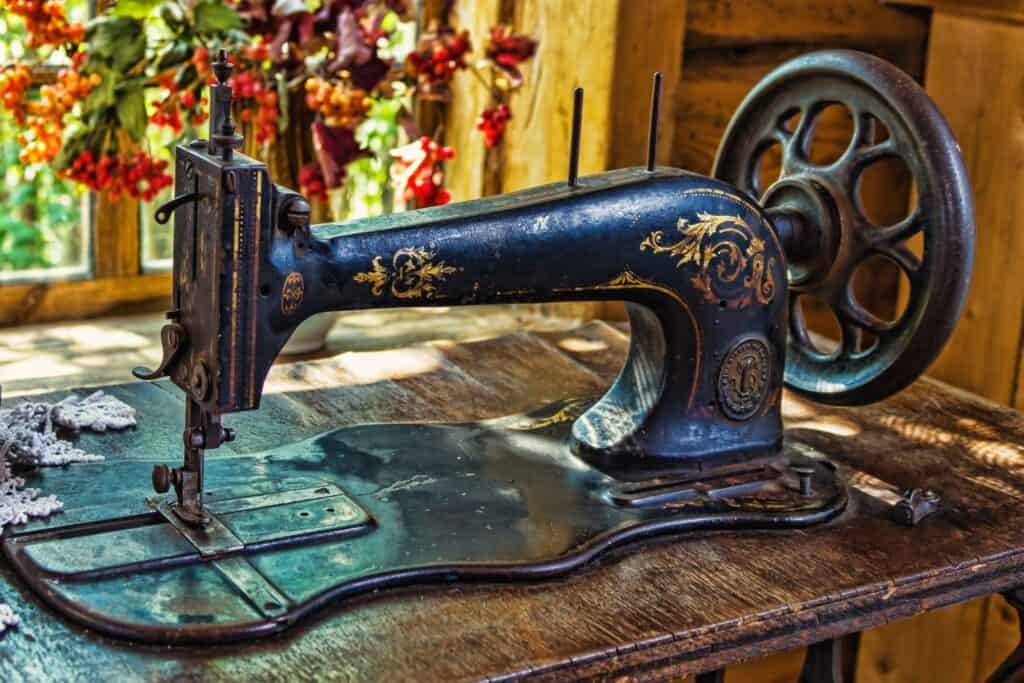
Regarding the packing of heavy items, remember the golden rule: heavy at the bottom, light at the top. This ensures stability and protects your lighter items from being crushed. Some tips for packing heavy items include:
- Books, those weighty tomes of knowledge, belong in small boxes
- Lighter, airier items like pillows can float on top of larger boxes
- Utilising plastic bins for moisture-sensitive items keeps your belongings dry and secure.
By maximising the packing space, you’re not just packing smarter – you’re paving the way for a smoother unpacking process at your new space.
Create an Essentials Box
Now, let’s discuss the essentials box, that one box that feels like a survival kit on your first day and night in your new home. This box is the VIP of your move; it holds your toiletries, basic kitchenware, and those all-important phone and computer chargers. Imagine stepping into your new shower, tired from the move, and finding your shampoo and soap at the ready – bliss! And don’t forget to pack a change of clothes for everyone, because comfort is key after a long day of moving.
What else makes the cut for your essentials box? Here are some suggestions:
- Toilet paper
- Cleaning supplies
- Basic tools for those unexpected needs
- A few toys for little ones to keep them occupied
- Important documents to have on hand
Label this separate box clearly and make it easily accessible, because once you arrive, this should be the first box you unpack. It’s the box that turns a house into a home, if only temporarily until the rest of your belongings find their place.
Disassemble and Secure Furniture
With furniture, the principle is straightforward: disassemble, wrap, and secure. Here’s how to do it:
- Begin by crafting a detailed plan of attack for each piece of furniture that needs to be taken apart.
- Have the right tools at hand, like screwdrivers and wrenches, to make the process easier.
- Take photos from various angles to document how each item fits together.
- Wrap each disassembled piece securely to protect it during the move.
Following these steps will help ensure that your furniture arrives at its new location in good condition.
As you disassemble, meticulously label and store all the small bits and bobs in plastic bags or containers. Think of furniture pads and moving blankets as the ultimate bodyguards against scratches and dents.
NOTE
Simple steps will ensure your furniture arrives ready for its new life in your new home, and you’ll avoid playing the guessing game of which screw fits where.
Label Boxes Clearly
While sealing each box, spare a moment to label its contents and the room it’s intended for prominently. This small step is a giant leap towards an organised unpacking process. Consider a colour-coded system to quickly identify the room each box belongs to – red for the kitchen, blue for the bedroom, and so on. A number-coded system can also be a lifesaver, ensuring that every box is accounted for. And don’t skimp on the quality of your marker; a good permanent marker can withstand a bit of rain and still be legible when you start unpacking.
With your boxes clearly labelled, you’ll greatly simplify the task for yourself and the movers. It’s about creating an easily navigable map of your belongings, one that leads you straight to what you need without the detours. It’s the difference between a chaotic treasure hunt and a smooth transition into your new home.
Unpack Strategically
Unpacking isn’t a sprint – it’s a marathon with deliberate rest stops. Begin by prioritising the essentials and the items you need to live comfortably and resume your daily routine. Here’s a suggested order for unpacking:
- Start with the kitchen, the heart of the home, allowing you to prepare meals and nourish yourself as you continue to settle in.
- Next, focus on the bathroom, ensuring it’s functional with all the necessary toiletries.
- After a long day of moving and unpacking, you’ll want nothing more than to collapse into your own bed, so make sure to set up your bedroom early in the unpacking process.
As you unpack, maintain order by:
- Disposing of packing materials and boxes, preventing clutter from piling up
- Taking your time, allowing yourself to place each item thoughtfully in its new location
- Remembering that the goal isn’t simply to empty boxes but to create a space that feels like home
Unpacking strategically is the final, satisfying piece of the moving puzzle.
Organise as You Unpack
Perceive the opening of each box as a chance to further optimise your space. With your inventory list in hand, you’ll know exactly what you’re dealing with, making it easier to organise as you go. Don’t be afraid to declutter further – if something doesn’t fit or serve a purpose in your new home, it might be time to let it go. And when it comes to areas like the garage or basement, take your time. These utility spaces are often less urgent and can be organised last.
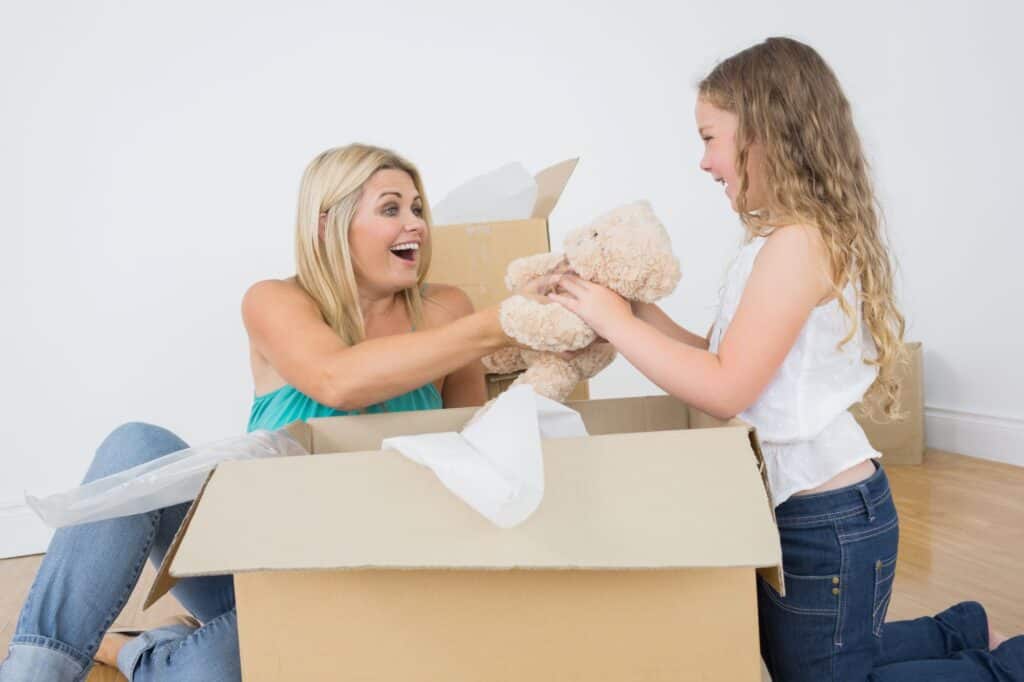
Organising as you unpack allows you to:
- Thoughtfully curate your new home, ensuring that everything has its place
- Build your new living space one box at a time
- Create order and tranquillity amidst the chaos of moving
- Have a home that’s not just unpacked but beautifully arranged and ready for new memories.
Seek Assistance When Needed
Bear in mind that it’s acceptable to admit defeat and call for backup. Moving can be an overwhelming ordeal, and there’s no shame in seeking assistance when needed. Enlist the help of family and friends for tasks like packing and lifting heavy items. Their presence can make the process more enjoyable and much smoother. And if the job seems too daunting, don’t hesitate to call in a professional removal company. With their expertise and equipment, they can make short work of even the most challenging moves.
Whether it’s the emotional support from loved ones or the skilled hands of professional movers, having assistance can transform your moving experience. It’s about sharing the load, both physically and metaphorically, to ensure you arrive at your new home with energy and enthusiasm intact. So, reach out, gather your team, and make your move an adventure to remember.
Summary
As our journey through packing and unpacking comes to a close, let’s reflect on the steps that pave the way to a successful move. From decluttering with care to gathering supplies, packing room by room, and organising as you go, each step is a building block towards creating a new home filled with potential. Remember that the protection of your belongings, clear labelling, and strategic unpacking are the cornerstones of a stress-free move. And when the going gets tough, don’t hesitate to seek a helping hand.
Let this guide be your compass as you navigate the choppy waters of moving home. Embrace each tip, and you’ll find yourself not just moving boxes but crafting the beginnings of your next chapter. Happy moving, and may your new home be everything you’ve dreamed of and more.
Frequently Asked Questions
How early should I start decluttering before a move?
Start decluttering six months to a year before your move to minimise stress and ensure a thorough process. Happy decluttering!
What should I include in my essentials box?
Make sure to include toiletries, basic kitchenware, chargers, important documents, a change of clothes, and cleaning supplies in your essentials box. These items will cover your immediate necessities in any situation.
How should I pack fragile items to ensure they don’t break during the move?
To ensure your fragile items don’t break during the move, wrap them in tissue or packing paper, add a layer of bubble wrap for extra padding, and pack them snugly to prevent movement. You can also use cardboard corners to protect frames and mirrors. Happy packing!
Is it important to label my boxes, and if so, how?
Yes, labelling your boxes with their contents and destination room is crucial for an organised move. You can use colour-coded or number-coded labels and write with a good-quality permanent marker to make the process easier.
What should I do if I feel overwhelmed during the packing or unpacking process?
Reach out to family and friends for assistance or consider hiring professional movers to make the process more efficient and less stressful. You don’t have to do everything alone.
